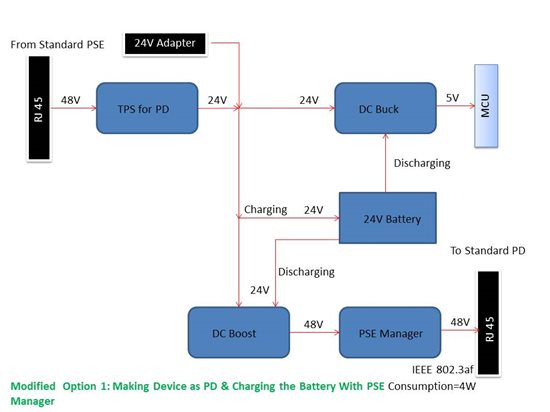Hi,
I am just wondering any one did this before. I have a requirement to make a POE device which will act as PSE and PD as well.
This Device has 2 Ethernet port. First port will get the power from a external PSE and the second port will source the power to the External PD.
My requirement is to charge a 24 V or 48 V Battery as well and in the absence of external PSE, the battery has to feed the Power for the External PD.
Any one did this kind before or Any special guidelines for such design ?
With Regards,
VA


